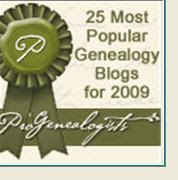"This is a landmark piece of living history," said Rabbi Marvin Hier, founder and dean of the Simon Wiesenthal Center. "In this small office, a man untrained to be a detective or an investigator brought to justice the most destructive mass murderers in the history of human civilization."
U.S. troops liberated Mauthausen (Austria) concentration camp on May 5, 1945; Wiesenthal was so weak that he collapsed. Just days later, he began on his lifelong quest to "bring to justice the major and minor Nazi killers who had exterminated 6 million of his fellow Jews and millions of Gypsies, Poles and other 'inferior' peoples."
Wiesenthal conducted his searches, for nearly five decades, from behind a dark wooden desk in Vienna, where he studied SS directories, photographs, city phone books and Holocaust survivors' letters to track offenders to the ends of the Earth. Biographers credit him with catching more than 1,000 war criminals.
Following his wife's death in 2003, he and Hier began discussing the possibility of moving the office to the museum, operated by the center, designed to teach visitors about the effects of racism and prejudice. Wiesenthal bequeathed the office contents to the center.
Susan Burden, the Center's chief financial officer, went to Vienna to organize the move; photographed every bookshelf, the desktop, framed commendations and even copies of newspaper clippings, packed about 1,500 books and videotapes, photos and medals. Six crates were shipped by air to Los Angeles, where archivists spent months cataloging the shipment.
"It was the most difficult assignment I ever had because I wanted to do it just right," Burden said. "It was emotionally tough. A lot of tears were shed."
The story recounts his search for Karl Silberbauer, thought to be the Austrian SS man who turned in Anne Frank and her family, and his years of research determining that Adolf Eichman faked his death so his wife could receive a pension. This helped Israel to capture Eichman in Argentina in 1960, and resulted in Wiesenthal's reopening of his Vienna center.
On the wall across from the desk is a giant map of Europe that enumerates the Nazis' victims by country: 627,000 Italians, 1.5 million French. Volumes by Aristotle and Ptolemy line the bookshelves, along with books about Vienna's Jews, German synagogues and Gestapo activities. Many of Wiesenthal's works are also there, including several translations of his 1976 book "The Sunflower: On the Possibilities and Limits of Forgiveness." Atop one case is a bouquet of cloth sunflowers that have accumulated years of dust -- Viennese dust, now behind a glass viewing wall in Los Angeles.
Read more here.





































No comments:
Post a Comment